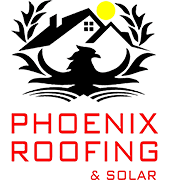- 0 Comment
The Impact of Siding on Home Insulation
When it comes to improving a home’s energy efficiency, many homeowners focus on upgrading their windows, doors, and roofs. However, siding also plays a crucial role in a home’s insulation and overall energy performance. Understanding how siding impacts insulation can help homeowners make informed decisions that enhance comfort and reduce energy bills.
Understanding Siding and Insulation
Siding serves as the protective outer shell of a house, defending against weather elements and contributing to the aesthetic appeal of the property. Beyond these functions, siding can significantly influence a home’s thermal insulation. Properly chosen and installed siding materials can act as an additional layer of insulation, maintaining the interior temperature and reducing energy loss.
The Role of Insulated Siding
Insulated siding, also known as foam-backed siding, is a type of siding that includes a layer of foam insulation attached to its back. This foam layer enhances the insulating properties of the siding, providing several benefits:
1.Thermal Bridging Reduction: Traditional siding allows thermal bridging, where heat escapes through the studs of the wall. Insulated siding minimizes this effect by covering the studs, reducing heat transfer and maintaining a more consistent indoor temperature.
2.Improved R-Value: The R-value measures the resistance to heat flow. Higher R-values indicate better insulation. Insulated siding increases the R-value of the wall, enhancing the home’s overall thermal efficiency.
3.Energy Savings: By improving insulation, insulated siding reduces the demand on heating and cooling systems. This translates to lower energy bills and a smaller carbon footprint, making it a cost-effective and environmentally friendly option.
Types of Insulated Siding
Several types of siding materials can be paired with insulation to improve energy efficiency:
1.Vinyl Siding: Vinyl siding is a popular choice due to its durability, low maintenance, and affordability. When combined with foam insulation, it provides excellent thermal performance and weather resistance.
2.Fiber Cement Siding: This type of siding is known for its strength and resistance to fire, termites, and rot. Adding insulation enhances its thermal properties, making it a robust and energy-efficient option.
3.Wood Siding: While wood siding offers a natural and classic look, it can benefit from added insulation to improve its energy efficiency. Insulated wood siding provides both aesthetic appeal and thermal performance.
4.Metal Siding: Metal siding is durable and resistant to various weather conditions. When insulated, it offers superior thermal resistance and energy savings.
Installation and Maintenance
The effectiveness of siding as an insulator depends significantly on proper installation. Poor installation can lead to gaps and leaks, undermining the insulation’s effectiveness. Therefore, hiring experienced siding contractors who understand the intricacies of insulated siding installation is crucial.
Regular maintenance is also essential to ensure the longevity and performance of insulated siding. Inspecting for cracks, gaps, or damage and addressing these issues promptly can prevent energy loss and maintain the siding’s insulating properties.
Environmental and Financial Benefits
Investing in insulated siding offers both environmental and financial advantages. By reducing energy consumption, homeowners contribute to a reduction in greenhouse gas emissions. This is particularly important in the context of global efforts to combat climate change.
Financially, the initial investment in insulated siding can be offset by the long-term savings on energy bills. Many homeowners find that the reduction in heating and cooling costs provides a return on investment within a few years. Additionally, some regions offer tax credits or incentives for energy-efficient home improvements, further enhancing the financial appeal of insulated siding.
Conclusion
Siding plays a vital role in a home’s insulation and overall energy efficiency. Insulated siding, in particular, offers significant benefits by reducing thermal bridging, improving the R-value, and contributing to energy savings. Whether choosing vinyl, fiber cement, wood, or metal siding, adding insulation enhances thermal performance and provides long-term environmental and financial benefits.
For homeowners looking to improve their home’s energy efficiency, investing in insulated siding is a smart and sustainable choice. By understanding the impact of siding on home insulation, homeowners can make informed decisions that enhance comfort, reduce energy bills, and contribute to a greener future.
